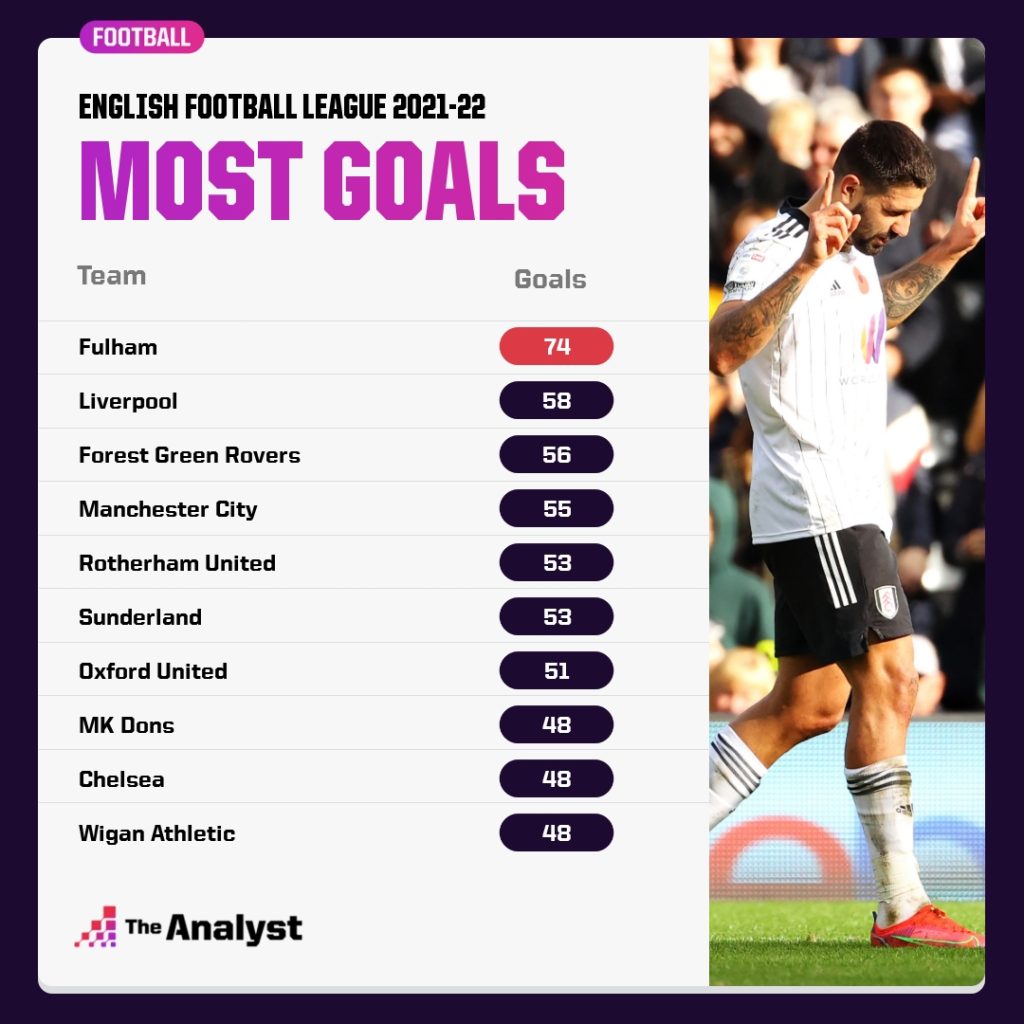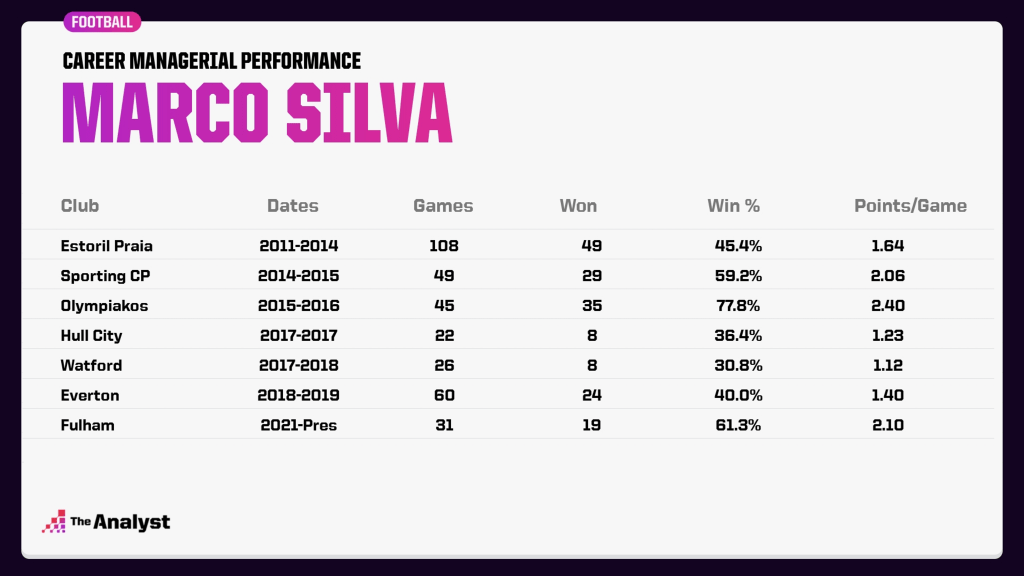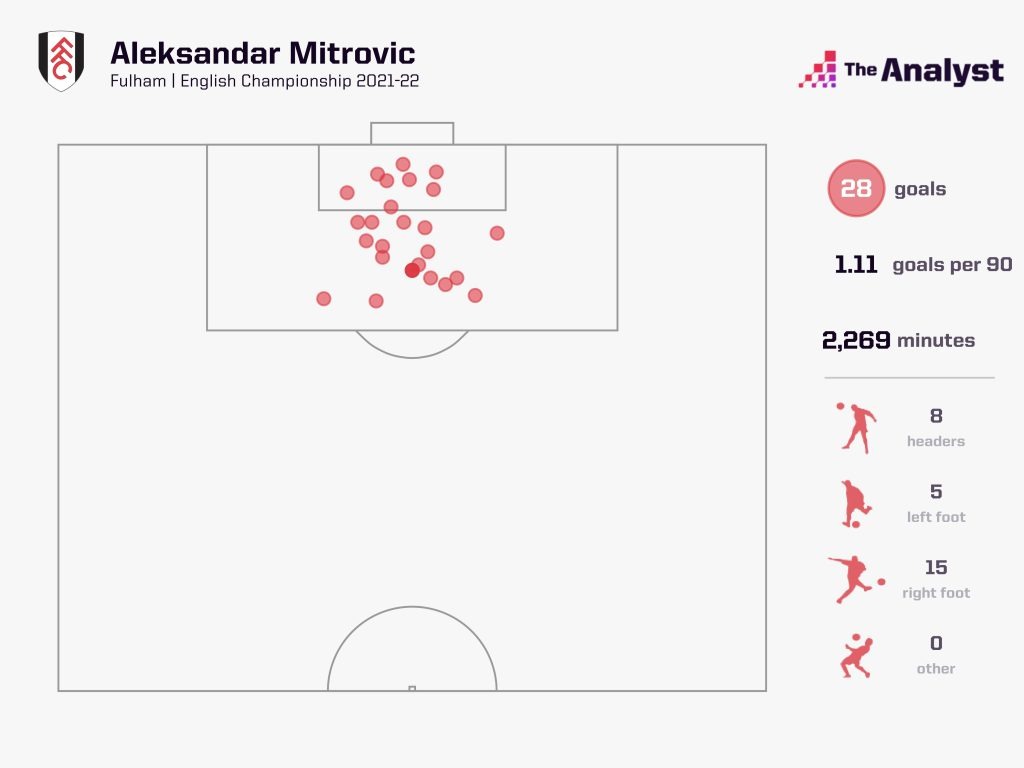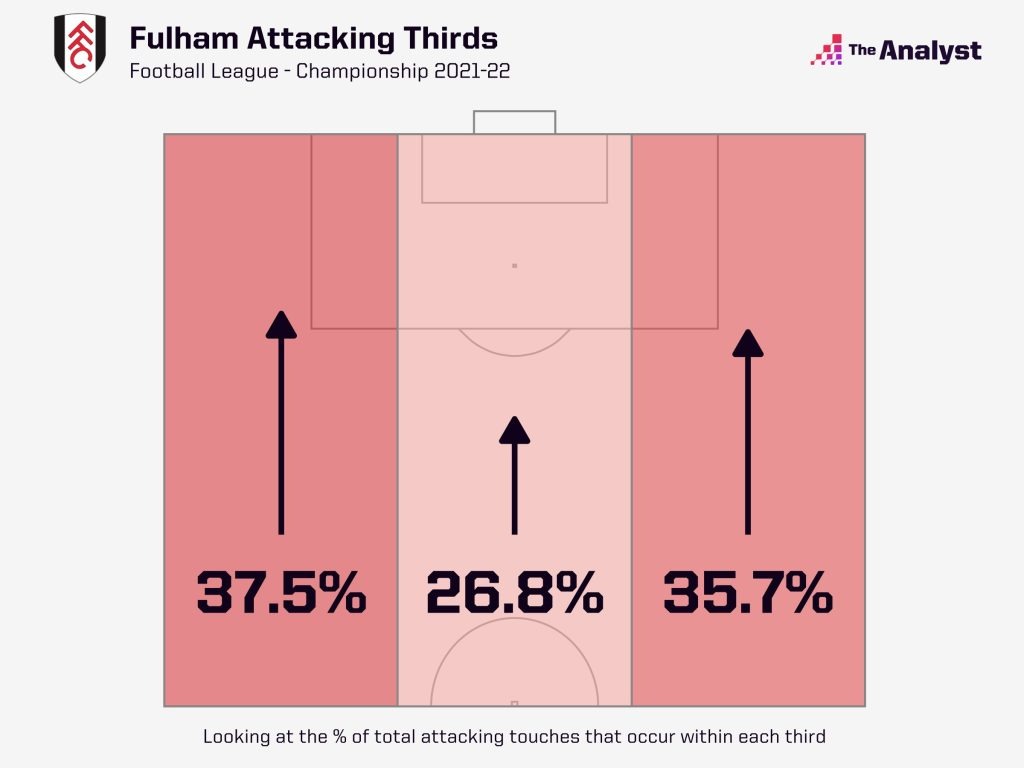After just under two years out of the game following his dismissal from Everton, Marco Silva is back and he means business. The 44-year-old has taken the Championship by storm with Fulham this season, with his side on course to gain promotion and break a host of goalscoring records along the way.
At the time of writing, Fulham are top of the Championship, they have won the most games in the division (17), have had had the most shots on target (174) and have scored more goals than any team in England’s professional leagues with a whopping 74, which is already more 10 more than Fulham managed in their last promotion-winning campaign (2019-20), despite only being 28 games into the season.

Earlier this month we went deep into Fulham’s goalscoring exploits and the records they are on course to smash. This piece will look at the journey of the man at the helm of the machine, Marco Silva. Silva is a totally transformed man from the dejected figure we saw on the touchline toward the end of his tenure at Everton, a man who was bereft of ideas, solutions and most of all, confidence.
We chart the career of Silva and explore the question: What seems to have changed for the Portuguese coach?
Career Beginnings
After hanging up his boots, the former Estoril defender began working as director of football at the club where he had finished his playing career. But after winning just one of their opening five fixtures, the Estoril board had a tough call to make. Brazilian manager Vinícius Eutrópio was relieved of his duties and a fresh-faced Marco Silva stepped into the managerial hotseat. It made for an interesting dynamic when you consider that Silva was now coaching his team-mates from the previous season, with some players in the squad being just a year or two younger than him.
Silva was an instant success. After 16 games at the helm, Estoril had suffered just one defeat. Perhaps one of the main reasons for his success was because Estoril had someone in charge who knew the club and most importantly, knew the squad. His time as a player meant Silva knew the strengths and weaknesses of the majority of players and above all, he knew what the group as a collective were capable of, and he was able to adjust the aims of the club in accordance with this information.
Estoril ended the season as Segunda Liga champions, with Silva winning 16 times from 25 league matches. Most importantly, Estoril had gained promotion to the Primeira Liga, giving the young coach the opportunity to test himself against Portugal’s best. His second season in charge was also an overwhelming success. Tipped to go straight back down to the second tier, Estoril defied all odds to finish fifth in the top flight. It was a historic achievement that meant the modest club from Cascais had made the UEFA Europa League playoffs – the club’s first involvement in European competition in its history – just one season after playing second division football.
His third and final season saw him top the lot, leading Estoril to a fourth-place finish and remarkably qualifying them directly for the Europa League group stages. In retrospect, Estoril’s 1-0 win against Sporting at the Estádio José Alvalade was a defining moment in his career, as it is said to be the moment that Sporting knew that Silva would be their coach for the following season. Sure enough, Silva signed on the dotted line for Sporting, grasping the opportunity to manage a club not just well-known in Portugal, but known throughout the world.
In his first and only season, Sporting scored a whopping 108 goals across all competitions, finished third in the Primeira Liga and won the Taça de Portugal, their first piece of silverware since 2008. Under Silva, Sporting were absolutely devastating in front of goal, much like his Fulham side are this season. Sporting managed to score four or more goals in a single game on seven different occasions and scored three goals on a further five.
His time at the club, however, ended after just one season. Sporting bizarrely sacked Silva, releasing a 400-page document, citing they had just cause to part ways with the manager. One of the reasons included in the document was that Silva had failed to wear an official club suit on matchday. Once Sporting had been presented with an opportunity to hire one of the most renowned names in Portugal, Jorge Jesus, it was clear that it was going to be curtains for Silva, who just happened to be at the helm when the club were presented with an opportunity they felt they couldn’t afford to turn down.
After a season with Greek giants Olympiacos in which he won the Super League, finishing a massive 35 points clear at the top of the table in the process, Silva was once more on the move, this time he was coming to England.
Hull City, Watford, Everton and Fulham – Joy, Despair and Everything in Between
Silva’s first taste of English football came at Hull City in 2017, a club rock bottom of the Premier League table after 20 matches. His task was clear: keep Hull in the division. At the time of his appointment, Hull had lost 13 of their 20 league matches, had just three wins on the board and had mustered a pitiful 17 goals, the lowest of any team in the league. It was a far cry from the free-flowing attack at Sporting that had comprised of Islam Slimani, Nani and Fredy Montero.
Silva brought an attacking spark to the KCOM and gave the Hull City fans a glimmer of hope, winning six of his 18 Premier League matches, including a brilliant 2-0 victory against Liverpool, as well as a hard-fought draw away at Old Trafford.
The Premier League table between Silva’s first game in charge to the end of the season had Hull City sitting comfortably in 14th with an impressive 21 points from 18 games, just two points fewer than what defending Premier League champions Leicester City had amassed during that same period. During Silva’s time at Hull, only 10 Premier League teams won more matches than the Tigers and only 12 teams scored more goals. Both of those statistics belonged to a mid-table Premier League club and pointed to the possibility that if Marco Silva had arrived earlier, Hull City may have stayed up.
Ultimately, it wasn’t enough. Hull were relegated to the Championship and Silva resigned from his position. The club’s official statement was full of praise for what Marco had tried to achieve during his time at the club.
Although disappointed by Marco’s departure, we would once again like to place on record our appreciation of his efforts and those of his support staff. … Despite only being in charge for a short period of time, the 39-year-old became a firm fans’ favourite and will be forever remembered for his efforts to maintain our Premier League status.
Impressed by his valiant efforts at Hull, Watford came calling and gave Silva another chance at Premier League management. His time at the club is often, and rightly so, divided in to two parts: pre-Everton interest and post-Everton interest.
Watford enjoyed a brilliant start to the 2017-18 season. Silva was proving himself to be tactically flexible, choosing to alternate between a 4-3-3, 5-4-1 and 4-2-3-1, and it worked with great success. In the first eight games, a period in which they had squared off against Liverpool, Manchester City and Arsenal, Watford remarkably suffered just one defeat. On 14th October, Silva’s men beat Arsenal 2-1 and rose to fourth place in the league.
Around the same period of time, Everton had recently parted company with manager Ronald Koeman, with owner Farhad Moshiri eyeing Silva as the man to take Everton forward. Watford however, stood firm. They were heading in the right direction under Silva and made it clear to the Merseyside club that their manager would be going nowhere, not even for the reported sum of £10 million Everton were willing to pay.
The damage, however, had already been done. The Hornets embarked on a dismal run of form and by December, the early season optimism amongst the Watford fans was all but gone. Just a month later, the man they battled so ardently to keep from the clutches of Everton, had been sacked. The cause of Watford’s poor form was clear in the eyes of the club.
The Club is convinced the appointment of Silva was the right one and had it not been for the unwarranted approach by a Premier League rival for his services we would have continued to prosper under his leadership.
The catalyst for this decision is that unwarranted approach, something which the Board believes has seen a significant deterioration in both focus and results to the point where the long-term future of Watford FC has been jeopardised. For the security and success of the football club, the Board believes it has to make a change.
His win percentage before Everton’s approach was 36%, his win percentage after the approach had dropped to 23%, with the club winning just one game in 11 before Silva’s sacking. A coincidence? Watford certainly didn’t believe so.
Fast forward to May 2018 and Everton finally had their man. If history has taught us anything, it’s that Silva tends to start very brightly at a new club and Everton was no different. After 13 matches, Everton sat in sixth and had lost just three matches. Things only started to fall apart for the Blues following the Merseyside derby at Anfield, a match better remembered for that Divock Origi goal.
Prior to the match, Liverpool boss Jürgen Klopp was full of compliments for the brilliant work Marco Silva had done up until that point at Everton. Klopp claimed that Silva’s Everton was “the best Everton squad” he had seen during his time in England. “It’s the best-tuned (Everton) squad, 100%. Good organisation, speed, the games were always difficult in the last couple of years, but the improvement of Everton is obvious. … It’s a completely different team, different style. It’s good.”
Silva is often touted as being desperately unlucky during his time at Everton, and no match perhaps epitomises this more than that Anfield derby. Silva’s side put in one of their best performances at Anfield in recent memory, a stadium they hadn’t won at since 1999. His side were aggressive and intense throughout the match, not content to sit on the back foot. Everton had nine shots, struck the woodwork and had a chance cleared off the line by defender Joe Gomez. As the game was winding down, it looked like for all of Everton’s huffing and puffing, they would have to settle for a respectable point, until a freak error by Jordan Pickford gifted Liverpool a 97th-minute winner, a devastating moment in Everton’s season.
Silva’s men then embarked on an abysmal run of form, losing nine of their next 14 matches. An upturn in form at the end of the season including a 4-0 rout over Manchester United at least gave Evertonians some renewed optimism, but there was a resounding feeling of what could have been – had they been able to better recover from that match at Anfield.
In the summer, Silva had to deal with the departure of key midfield man Idrissa Gueye to PSG. To add insult to injury, Everton’s pursuits of Chelsea defender Kurt Zouma and Wilfried Zaha of Crystal Palace both came to nothing.
By December, Silva was teetering on the edge. Norwich arrived at Goodison bottom of the league, and 90 minutes later they were heading back to East Anglia with their first away win of the season. Defeats at the hands of Leicester and a 5-2 hammering against Liverpool left Everton with no choice but to part ways with Silva.

After great success at Estoril, a strong season at Sporting, a league title in Greece, an admirable effort at Hull and a Watford tenure marred primarily by a lack of focus, it was arguably at Everton where Silva for the first time in his career looked completely out of his depth. A highly talented coach, yes, but he was now at a point where he couldn’t afford to simply walk into another job straight away without taking time to reflect. He had to take time away to assess just exactly what had gone wrong, and one thing was for sure, his next move had to be the right one.
Refreshed and Rejuvenated
After just over 18 months out of management, Silva was appointed as Fulham manager. The Cottagers, who had been relegated to the Championship the season before, was the perfect opportunity for Silva to showcase his talent once more.
So far this season, Fulham have been nothing short of breathtaking. In the month of January, the Cottagers embarked on a four-game run that saw them beat Reading 7-0, Bristol City 6-2, Birmingham City 6-2 and beat Stoke City 3-2. To score seven goals in a single game is incredible, to then score six goals in your next game is almost unbelievable, to then score another six in the following game is the stuff of fantasy.
Playing primarily in a 4-2-3-1 system, Fulham have excelled all over the pitch.
Fábio Carvalho has been a revelation and a real bright spark operating behind Aleksandar Mitrović. Carvalho has already chipped in with seven goals and four assists so far this season and after Liverpool’s attempt to sign him late in the window fell through, he remains a Fulham player.
Mitrović is scoring for fun with 28 Championship goals to his name already. At his current scoring rate, the Serb is on track to net a remarkable 46 in total.

Something that is reminiscent of Silva’s time at Sporting is that Fulham are showing great variation to their attacks. At Sporting they were equally adept at playing through their dynamic wingers as they were playing through the midfield through the likes of Adrién Silva. At Fulham, they are operating in a similar way. Midfield man Jean Michaël Seri has six assists to his name already, the same number of assists that Bobby Decordova-Reid has from out wide, showing Fulham’s versatility in attack. As the attacking thirds graphic below shows, Silva’s men can just as easily play centrally and through the opposition as they can through moves from wider positions. The numbers also reflect this: Only four teams in the league have attempted more crosses into the box than Fulham this season (577) and only Cardiff City have scored more headers (19) than Fulham (17).

Simply put, Fulham are scoring so many goals because they look comfortable creating chances from a variety of different positions on the pitch, whether it be from out wide, centrally, following large spells of possession or from fast breaks – of which Fulham have scored the second most in the league with four – Marco Silva’s men have shown so far this season that they can do it all.
Defensively, Silva seems to have improved also. Only West Bromwich Albion and AFC Bournemouth have conceded fewer goals than Fulham’s 24, with both sides conceding 22, but Silva’s team have conceded a league-low 25.2 expected goals.
Fulham aren’t making as many defensive actions compared to the rest of the league, but this is simply because they are keeping possession for longer periods. They are averaging 60.2% possession per match, the second highest in the league. Fulham have also completed a whopping 12,696 passes, again ranking them second most in the league behind Swansea City.
Silva will once more be able to test himself against a Premier League side in the coming days and the challenge doesn’t come much bigger than against Manchester City, the best team in the country. It will be an intensely difficult challenge for Fulham, but for Silva, he will be hoping to continue rebuilding his reputation and prove, through his team’s performance this coming Saturday, that he is ready once more for a chance to manage in the Premier League.
Enjoy this? Subscribe to our mailing list to receive exclusive weekly content.
